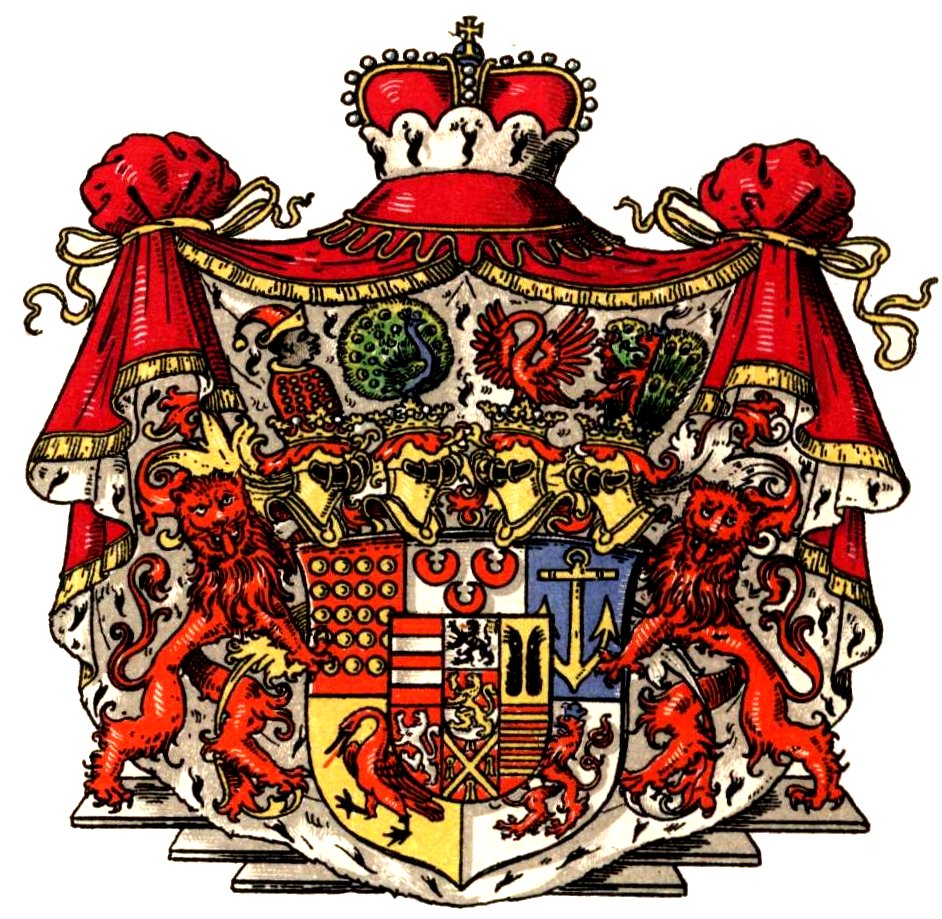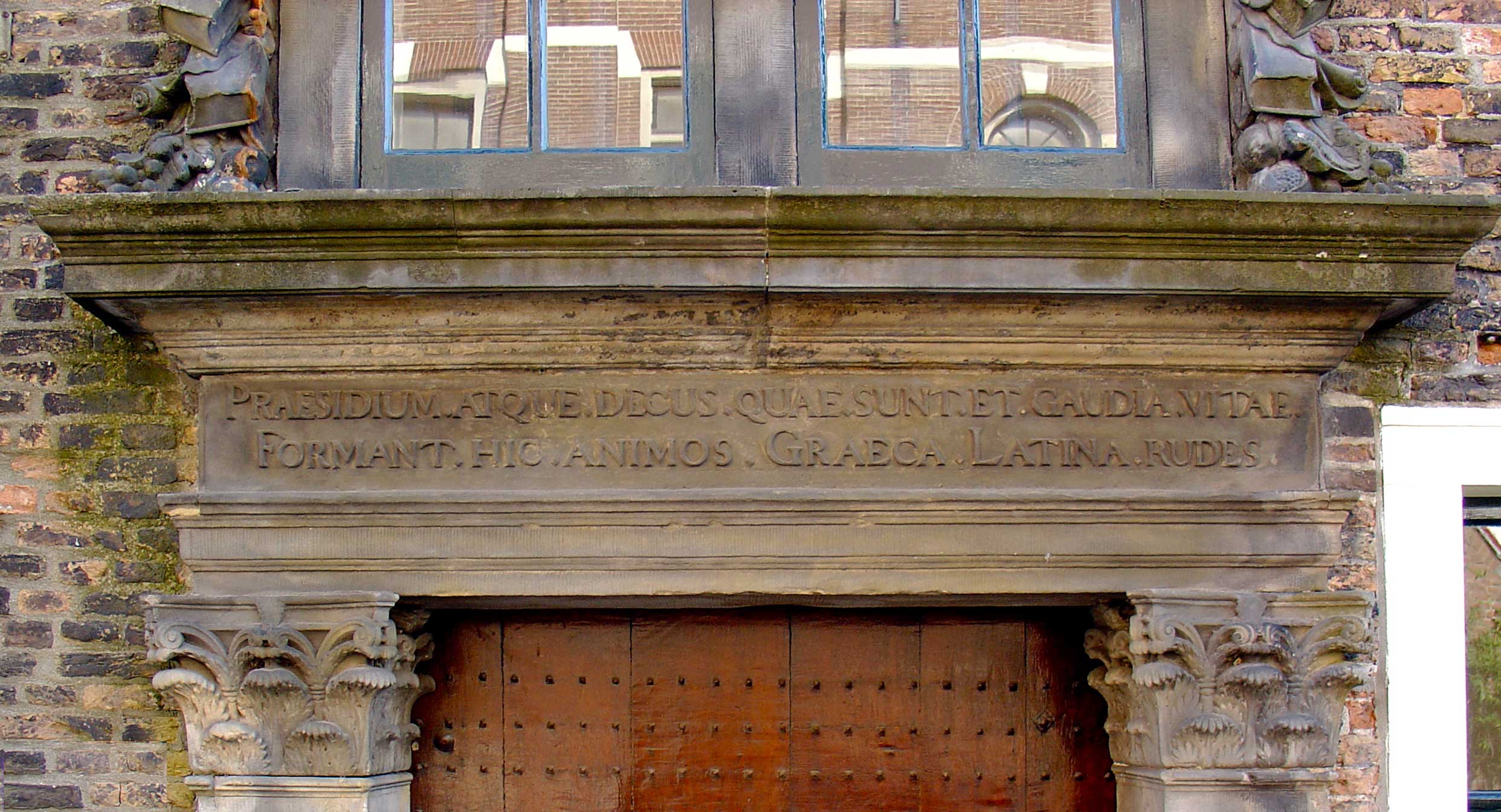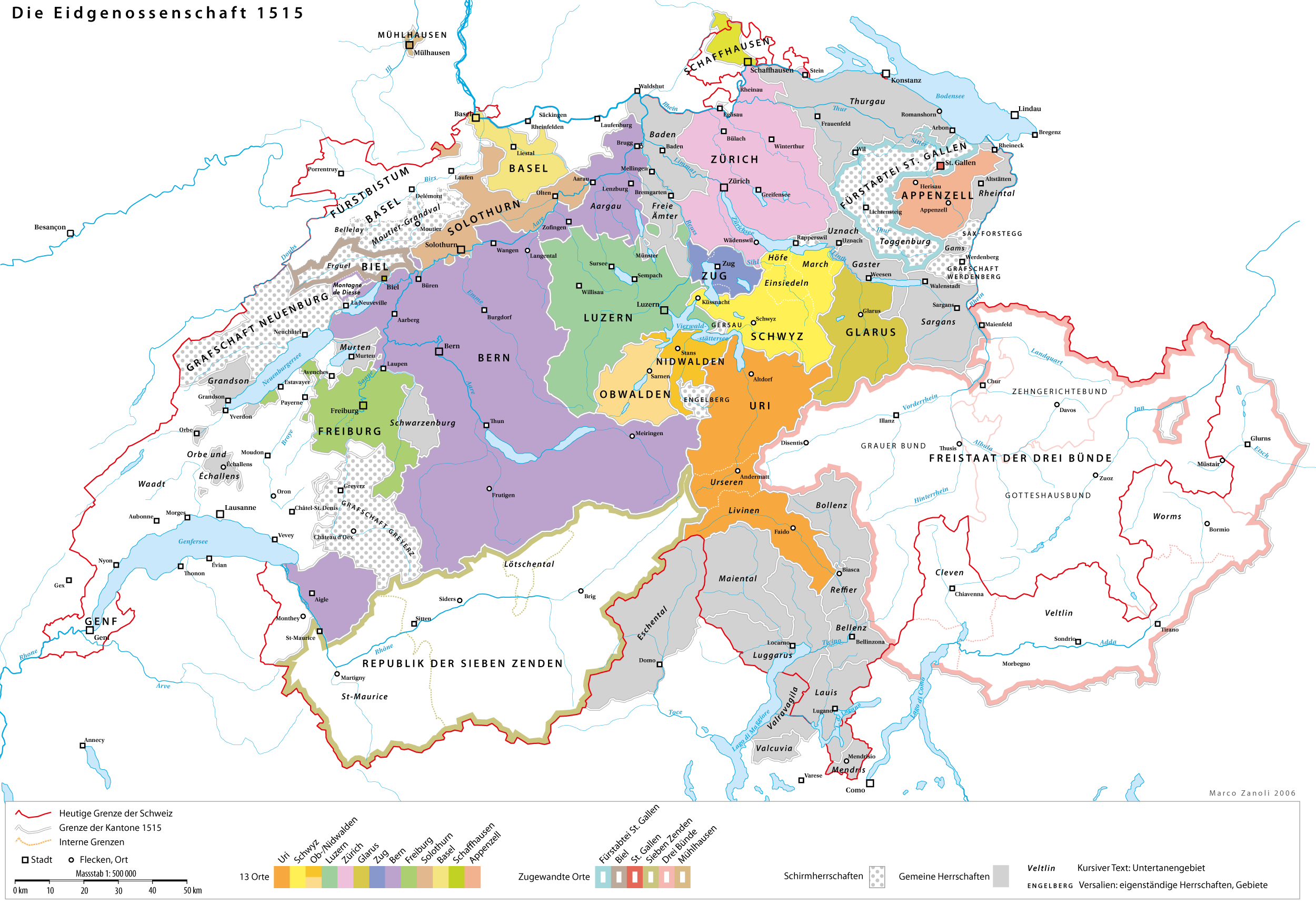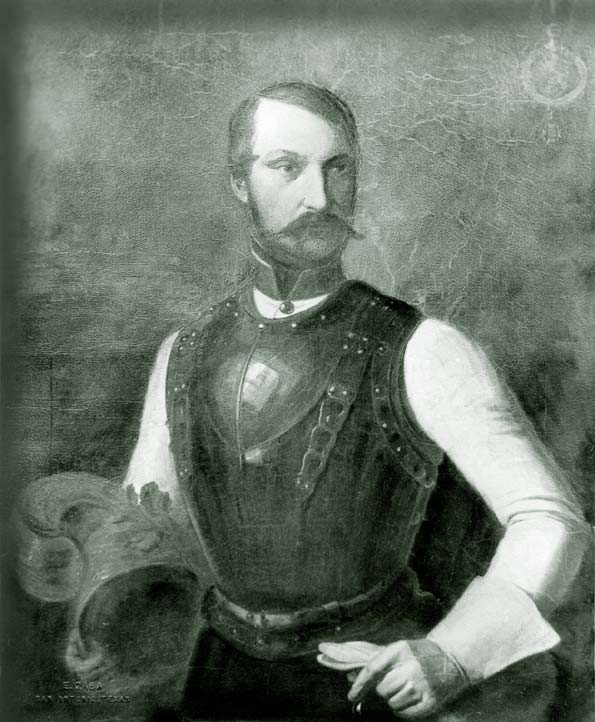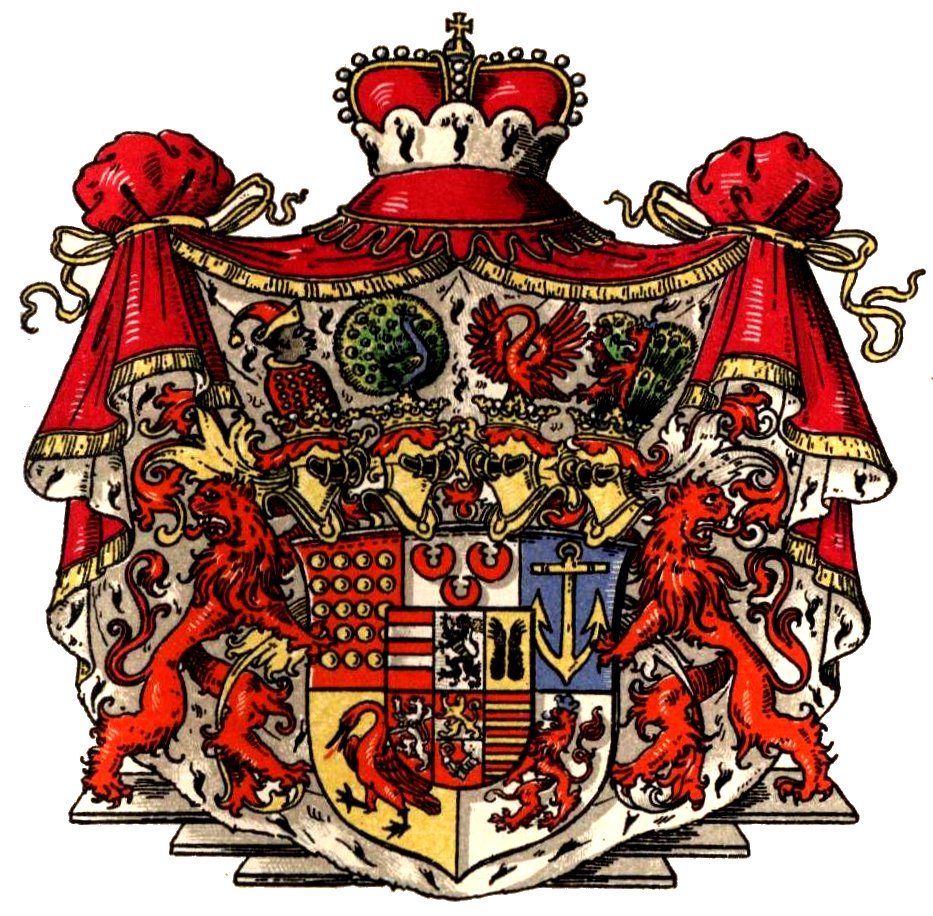|
Arnold III, Count Of Bentheim-Steinfurt-Tecklenburg-Limburg
Arnold III of Bentheim-Tecklenburg-Steinfurt-Limburg (10 or 11 October 1554 in Neuenhaus – 11 January 1606 in Tecklenburg) was a German nobleman. He was Count of Bentheim, Tecklenburg and Steinfurt, and Count of Limburg. He ruled as Arnold IV in Bentheim and Tecklenburg, and as Arnold II in Steinfurt. In Limburg, he was the first Count named Arnold and hence just the name distinctive. Early life Arnold was the born as the eldest child and only son of Count Eberwin III of Bentheim-Steinfurt (elder line) and his wife, Countess Anna of Tecklenburg-Schwerin. He had one sister, Countess Walburga of Wied (1555-1628). Biography He spent his youth in Leeden Abbey with his sister Walburga. His mother educated him in regards to religion. He attended the princely school in Jülich where he studied arts, languages and knightly exercises. He had both Protestant and Catholic teachers. In 1571, he went to Strasbourg, to study Protestant theology, law and politics. He was plannin ... [...More Info...] [...Related Items...] OR: [Wikipedia] [Google] [Baidu] |
Bentheim-Steinfurt
Bentheim-Steinfurt was a historical county located in northwestern North Rhine-Westphalia in the region surrounding Steinfurt, Germany. Bentheim-Steinfurt was a partition of Bentheim-Bentheim, itself a partition of the County of Bentheim. Bentheim-Steinfurt was partitioned: between itself and Bentheim-Tecklenburg-Rheda in 1606; and between itself and Bentheim-Bentheim in 1643. History Bentheim-Steinfurt and its territories were converted to Lutheranism in 1544 by Count Arnold II. He was succeeded by his less-religious son, Eberwin III. After the latter's early death at age 26, he was succeeded by his infant child, Arnold III, under the regency of Anna of Tecklenburg. Arnold III married Magdalena of Neuenahr in 1576, and he began attempts to properly convert the county to Protestantism. In the autumn of 1587, Lutheran preachers from across Germany were invited to help reform the Counties of Bentheim, Steinfurt, Lingen and Tecklenburg. The new laws were largely modelled on ... [...More Info...] [...Related Items...] OR: [Wikipedia] [Google] [Baidu] |
Daun, Germany
Daun is a town in the Vulkaneifel district in Rhineland-Palatinate, Germany. It is the district seat and also the seat of the ' of Daun. Geography Location The town lies in the , a part of the Eifel known for its volcanic history, geographical and geological features, and even ongoing activity today, including gases that sometimes well up from the earth. Daun lies south of the High Eifel on the river Lieser. Found from 2.5 to 3.5 km southeast of Daun’s town centre are the Dauner '' Maare'', a group of three volcanic lakes separated almost wholly by only the walls of tuff between them. The town is home to the '. Daun is furthermore a spa town and has mineral water springs. Constituent communities The district seat of Daun has 8,514 inhabitants (as of 31 December 2005, counting only those with their main residence in the town). Besides the main town, also called Daun (4,264 inhabitants), the municipal area also includes these outlying centres (') that were former ... [...More Info...] [...Related Items...] OR: [Wikipedia] [Google] [Baidu] |
House Of Nassau
The House of Nassau is a diversified aristocratic dynasty in Europe. It is named after the lordship associated with Nassau Castle, located in present-day Nassau, Rhineland-Palatinate, Nassau, Rhineland-Palatinate, Germany. The lords of Nassau were originally titled "Count of Nassau", then elevated to the princely class as "Princely Counts". Early on they divided into two main branches: the elder (Walramian) branch, that gave rise to the German king Adolf, King of the Romans, Adolf, and the younger (Ottonian) branch, that gave rise to the Prince of Orange, Princes of Orange and the King of the Netherlands, monarchs of the Netherlands. At the end of the Holy Roman Empire and the Napoleonic Wars, the Walramian branch had inherited or acquired all the Nassau ancestral lands and proclaimed themselves, with the permission of the Congress of Vienna, the "Dukes of Nassau", forming the independent state of Duchy of Nassau, Nassau with its capital at Wiesbaden; this territory today main ... [...More Info...] [...Related Items...] OR: [Wikipedia] [Google] [Baidu] |
Gymnasium (Germany)
''Gymnasium'' (; German plural: ''Gymnasien''), in the German education system, is the most advanced and highest of the three types of German secondary schools, the others being '' Hauptschule'' (lowest) and '' Realschule'' (middle). ''Gymnasium'' strongly emphasizes academic learning, comparable to the British sixth form system or with prep schools in the United States. A student attending ''Gymnasium'' is called a ''Gymnasiast'' (German plural: ''Gymnasiasten''). In 2009/10 there were 3,094 gymnasia in Germany, with students (about 28 percent of all precollegiate students during that period), resulting in an average student number of 800 students per school.Federal Statistical office of Germany, Fachserie 11, Reihe 1: Allgemeinbildende Schulen – Schuljahr 2009/2010, Wiesbaden 2010 Gymnasia are generally public, state-funded schools, but a number of parochial and private gymnasia also exist. In 2009/10, 11.1 percent of gymnasium students attended a private gymnasium. T ... [...More Info...] [...Related Items...] OR: [Wikipedia] [Google] [Baidu] |
Schüttorf
Schüttorf ( Northern Low Saxon: ''Schüttrup'') is a town in the district of Grafschaft Bentheim in southwesternmost Lower Saxony near the Dutch border and the boundary with Westphalia (North Rhine-Westphalia). The town of Schüttorf forms with the surrounding communities the Joint Community (''Samtgemeinde'') of Schüttorf. It is the district's oldest town. It lies on the river Vechte, roughly 5 km east of Bad Bentheim, and 20 km southeast of Nordhorn. Geography Location and landscape description The town of Schüttorf lies in southwesternmost Lower Saxony and in the westernmost part of the Federal Republic of Germany. It is roughly 10 km to the Dutch border. With regards to the cultural makeup and to the natural environment, it lies in a transitional zone between the Emsland and Westphalia. The surroundings may be characterized as settled countryside. Middle centres in the area are, among others, Nordhorn and Rheine. The town is crossed through the middle s ... [...More Info...] [...Related Items...] OR: [Wikipedia] [Google] [Baidu] |
Latin School
The Latin school was the grammar school of 14th- to 19th-century Europe, though the latter term was much more common in England. Emphasis was placed, as the name indicates, on learning to use Latin. The education given at Latin schools gave great emphasis to the complicated grammar of the Latin language, initially in its Medieval Latin form. Grammar was the most basic part of the trivium and the Liberal arts — in artistic personifications Grammar's attribute was the birch rod. Latin school prepared students for university, as well as enabling those of middle class status to rise above their station. It was therefore not unusual for children of commoners to attend Latin schools, especially if they were expected to pursue a career within the church.Wiesner-Hanks, p122. Although Latin schools existed in many parts of Europe in the 14th century and were more open to the laity, prior to that the Church allowed for Latin schools for the sole purpose of training those who would one d ... [...More Info...] [...Related Items...] OR: [Wikipedia] [Google] [Baidu] |
Huldrych Zwingli
Huldrych or Ulrich Zwingli (1 January 1484 – 11 October 1531) was a leader of the Reformation in Switzerland, born during a time of emerging Swiss patriotism and increasing criticism of the Swiss mercenary system. He attended the University of Vienna and the University of Basel, a scholarly center of Renaissance humanism. He continued his studies while he served as a pastor in Glarus and later in Einsiedeln, where he was influenced by the writings of Erasmus. In 1519, Zwingli became the Leutpriester (people's priest) of the Grossmünster in Zürich where he began to preach ideas on reform of the Catholic Church. In his first public controversy in 1522, he attacked the custom of fasting during Lent. In his publications, he noted corruption in the ecclesiastical hierarchy, promoted clerical marriage, and attacked the use of images in places of worship. Among his most notable contributions to the Reformation was his expository preaching, starting in 1519, throu ... [...More Info...] [...Related Items...] OR: [Wikipedia] [Google] [Baidu] |
John Calvin
John Calvin (; frm, Jehan Cauvin; french: link=no, Jean Calvin ; 10 July 150927 May 1564) was a French theologian, pastor and reformer in Geneva during the Protestant Reformation. He was a principal figure in the development of the system of Christian theology later called Calvinism, including its doctrines of predestination and of God's absolute sovereignty in the salvation of the human soul from death and eternal damnation. Calvinist doctrines were influenced by and elaborated upon the Augustinian and other Christian traditions. Various Congregational, Reformed and Presbyterian churches, which look to Calvin as the chief expositor of their beliefs, have spread throughout the world. Calvin was a tireless polemicist and apologetic writer who generated much controversy. He also exchanged cordial and supportive letters with many reformers, including Philipp Melanchthon and Heinrich Bullinger. In addition to his seminal '' Institutes of the Christian Religion'', Calv ... [...More Info...] [...Related Items...] OR: [Wikipedia] [Google] [Baidu] |
Solms-Braunfels
Solms-Braunfels was a County and later Principality with Imperial immediacy in what is today the federal Land of Hesse in Germany. Solms-Braunfels was a partition of Solms, ruled by the House of Solms, and was raised to a Principality of the Holy Roman Empire in 1742. The county of Solms-Braunfels was partitioned between: itself and Solms-Ottenstein in 1325; itself and Solms-Lich in 1409; and itself, Solms-Greifenstein and Solms-Hungen in 1592. Frederick William (1696–1761) was created a ''Prince of the Holy Roman Empire'' in 1742, with his younger offspring also bearing the title prince and princess, styled ''Serene Highness''. The Principality of Solms-Braunfels was mediatised to Austria, Hesse-Darmstadt, Prussia and Württemberg in 1806. Rulers Counts of Solms-Braunfels (1258–1742) * Henry III, Count 1258–1312 (died 1312), ''elder son of Henry II, Count of Solms'' ** Bernhard I, Count 1312–49 (died 1349), ''second son of Henry III'' *** Otto I, Co ... [...More Info...] [...Related Items...] OR: [Wikipedia] [Google] [Baidu] |
Primogeniture
Primogeniture ( ) is the right, by law or custom, of the firstborn legitimate child to inheritance, inherit the parent's entire or main estate (law), estate in preference to shared inheritance among all or some children, any illegitimate child or any collateral relative. In most contexts, it means the inheritance of the firstborn son (agnatic primogeniture); it can also mean by the firstborn daughter (matrilineal primogeniture). Description The common definition given is also known as male-line primogeniture, the classical form popular in European jurisdictions among others until into the 20th century. In the absence of male-line offspring, variations were expounded to entitle a daughter or a brother or, in the absence of either, to another collateral relative, in a specified order (e.g. male-preference primogeniture, Salic primogeniture, semi-Salic primogeniture). Variations have tempered the traditional, sole-beneficiary, right (such as French appanage) or, in the West since ... [...More Info...] [...Related Items...] OR: [Wikipedia] [Google] [Baidu] |
Bentheim-Tecklenburg
Bentheim-Tecklenburg was a German county based in the region around Tecklenburg in northern North Rhine-Westphalia, Germany. History Bentheim-Tecklenburg emerged as a partition of the County of Bentheim in 1277, and was partitioned between itself and Bentheim-Lingen in 1450. Count Conrad converted his county to Lutheranism in 1541. In 1557, it was inherited by Bentheim-Steinfurt. Arnold III, Count of Bentheim-Steinfurt-Tecklenburg-Limburg (1554-1606) held the counties of Bentheim, Tecklenburg, Steinfurt, Limburg (with Hohenlimburg Castle), the Lordship of Rheda, possessions on the Lower Rhine and bailiff rights in the Archbishopric of Cologne. After his death his possessions were divided between his three eldest sons while the younger sons received lands from their mother. Adolf (1577-1623) received Tecklenburg and Rheda, Wilhelm Heinrich (1584-1632) Steinfurt (with Burgsteinfurt Castle), but left no offspring, Konrad Gumprecht (1585-1618) received Limburg, but his o ... [...More Info...] [...Related Items...] OR: [Wikipedia] [Google] [Baidu] |
Archbishopric Of Cologne
The Archdiocese of Cologne ( la, Archidioecesis Coloniensis; german: Erzbistum Köln) is an archdiocese of the Catholic Church in western North Rhine-Westphalia and northern Rhineland-Palatinate in Germany. History The Electorate of Cologne—not to be confused with the larger Archdiocese of Cologne—was one of the major ecclesiastical principalities of the Holy Roman Empire. The city of Cologne as such became a free city in 1288 and the archbishop eventually moved his residence from Cologne Cathedral to Bonn to avoid conflicts with the Free City, which escaped his jurisdiction. After 1795, the archbishopric's territories on the left bank of the Rhine were occupied by France, and were formally annexed in 1801. The Reichsdeputationshauptschluss of 1803 secularized the rest of the archbishopric, giving the Duchy of Westphalia to the Landgraviate of Hesse-Darmstadt. As an ecclesial government, however, the archdiocese remained (more or less) intact: while she lost the left ... [...More Info...] [...Related Items...] OR: [Wikipedia] [Google] [Baidu] |

